
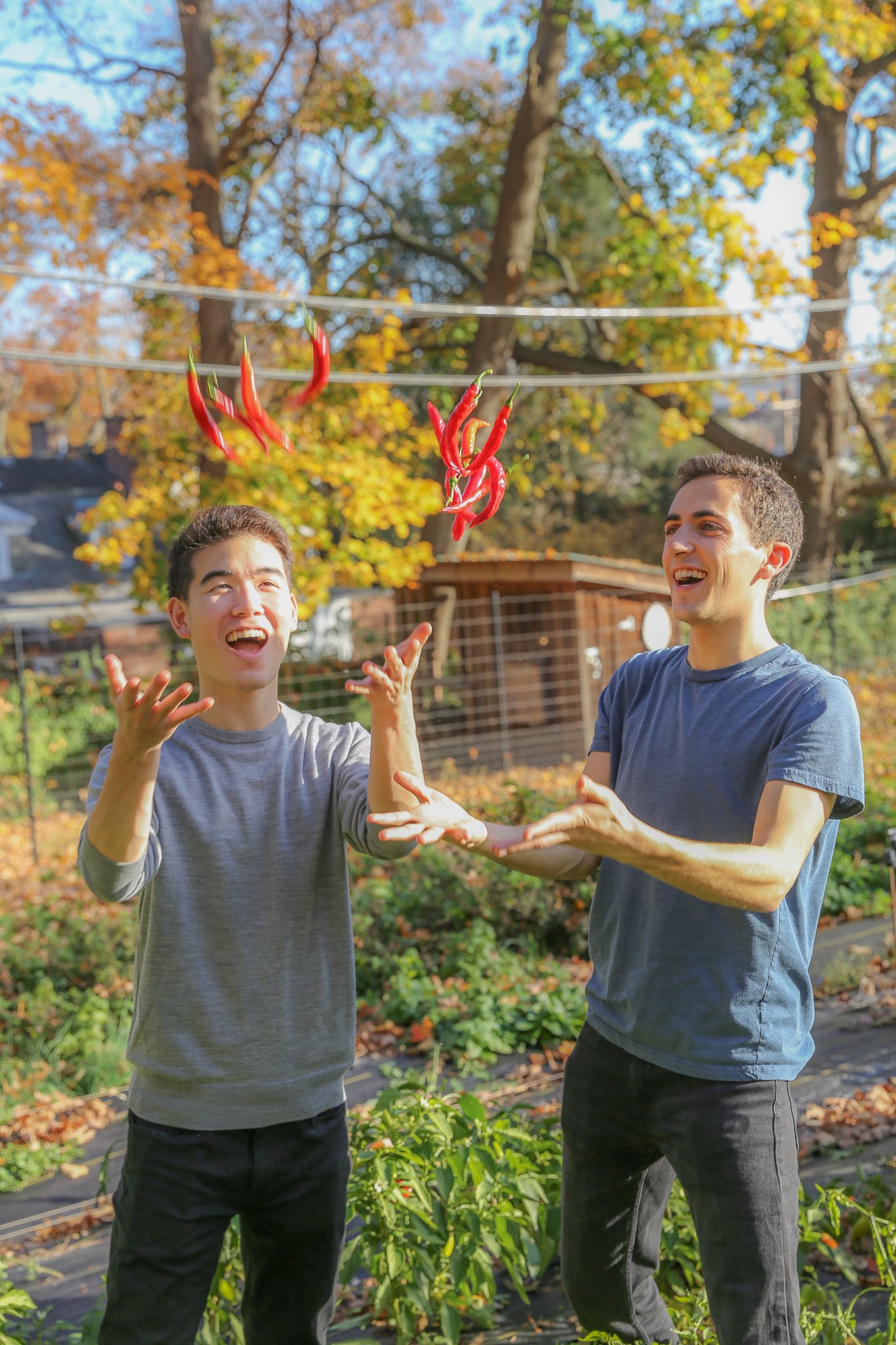
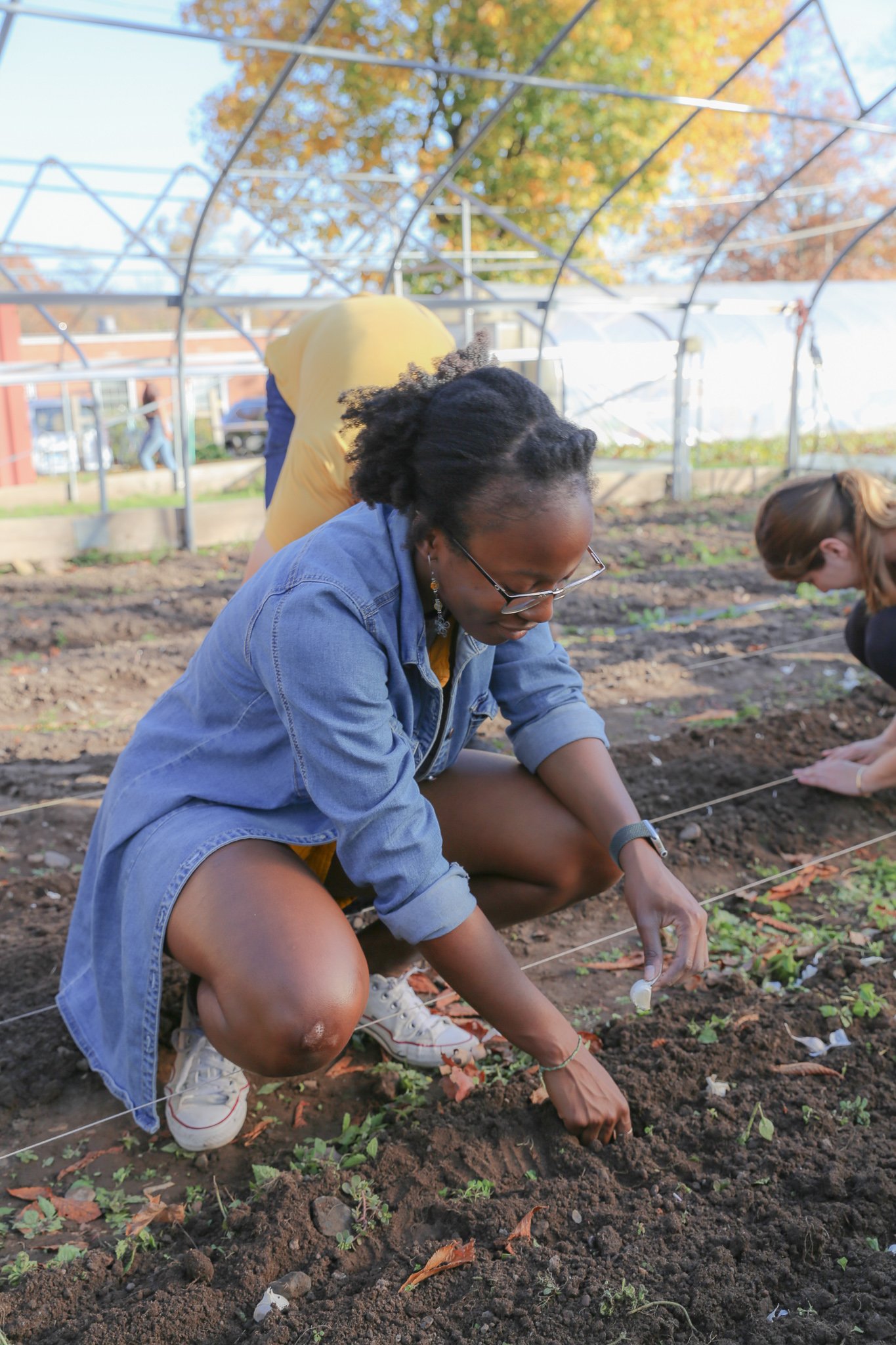
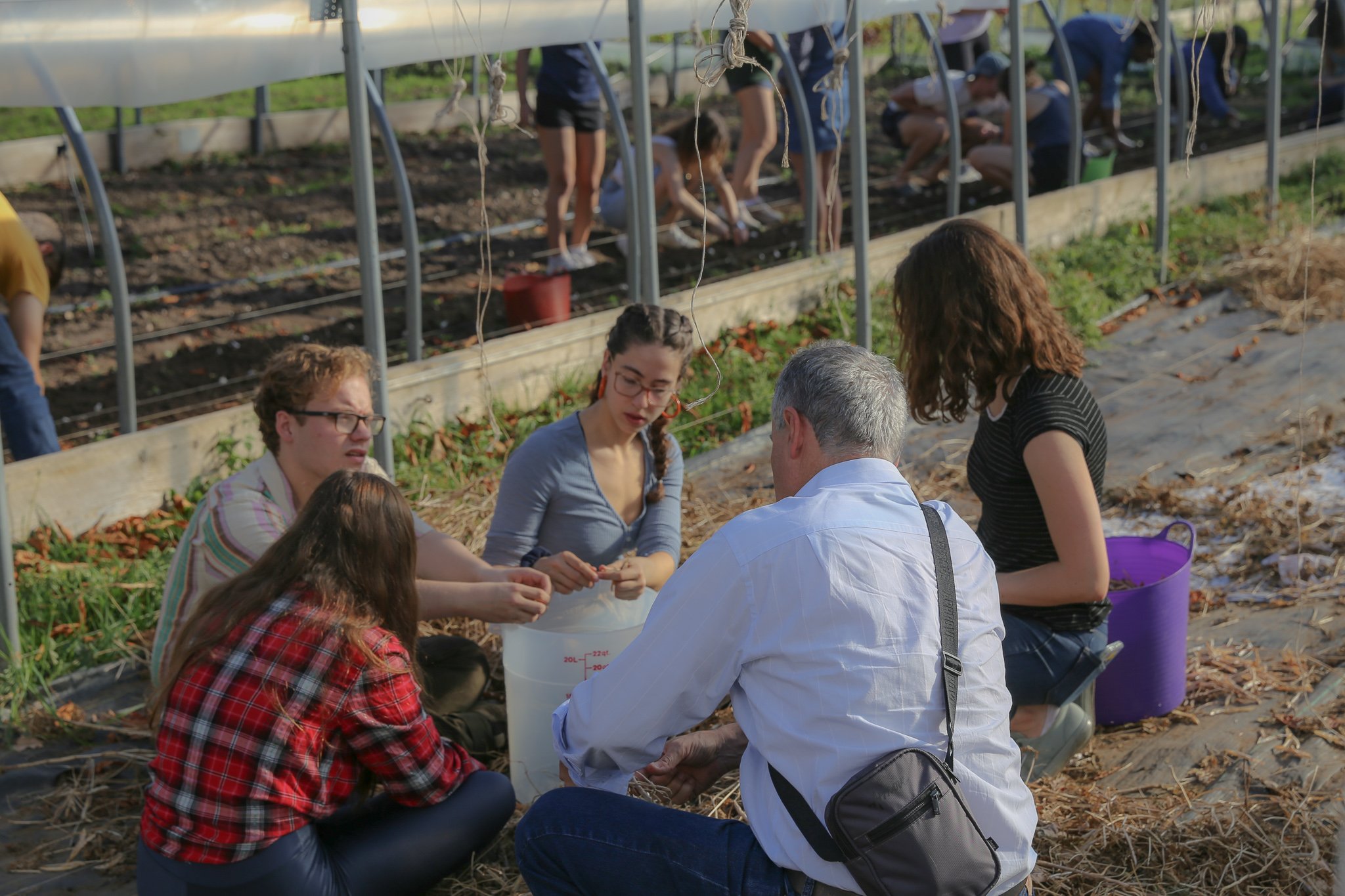
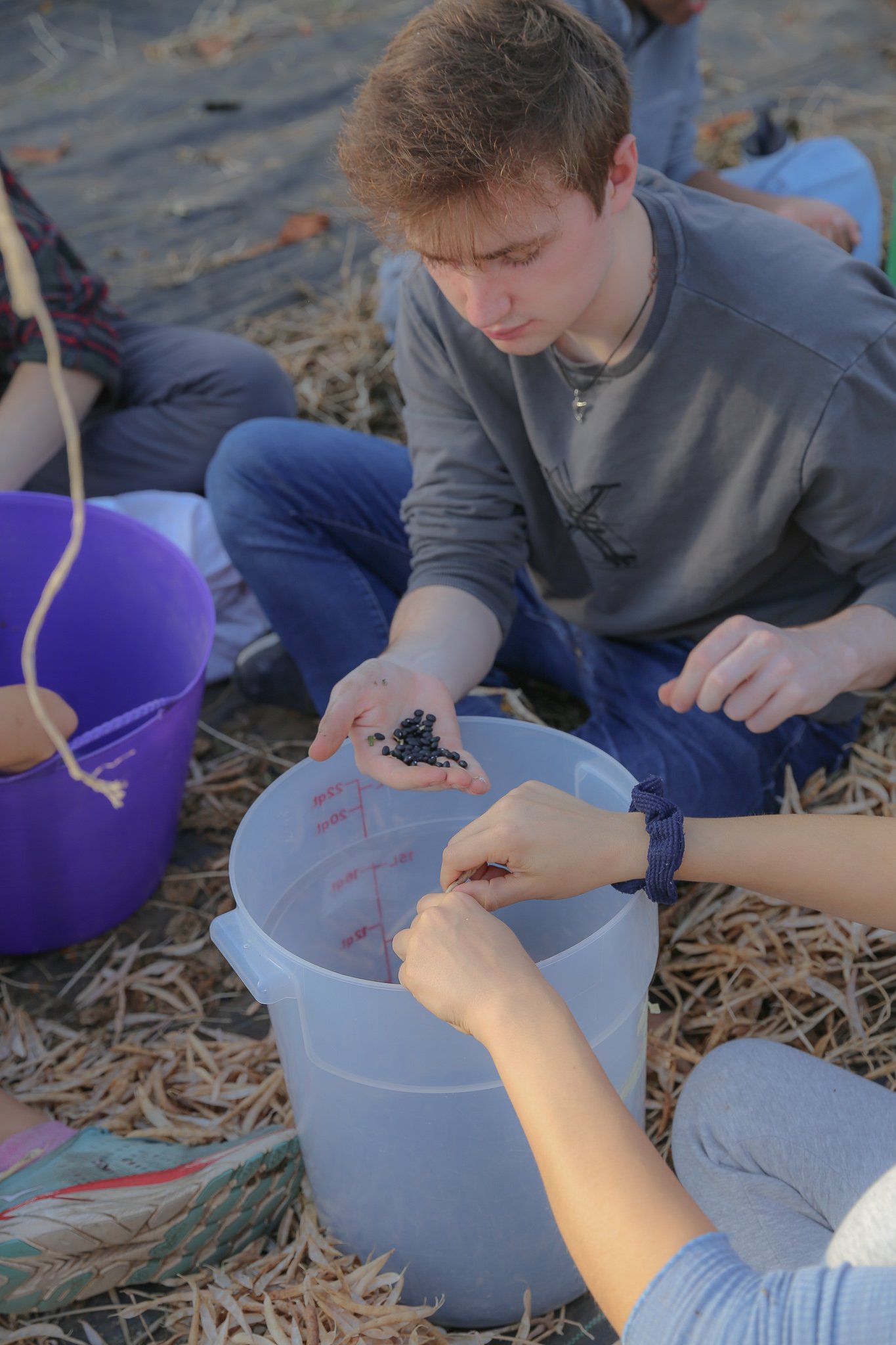
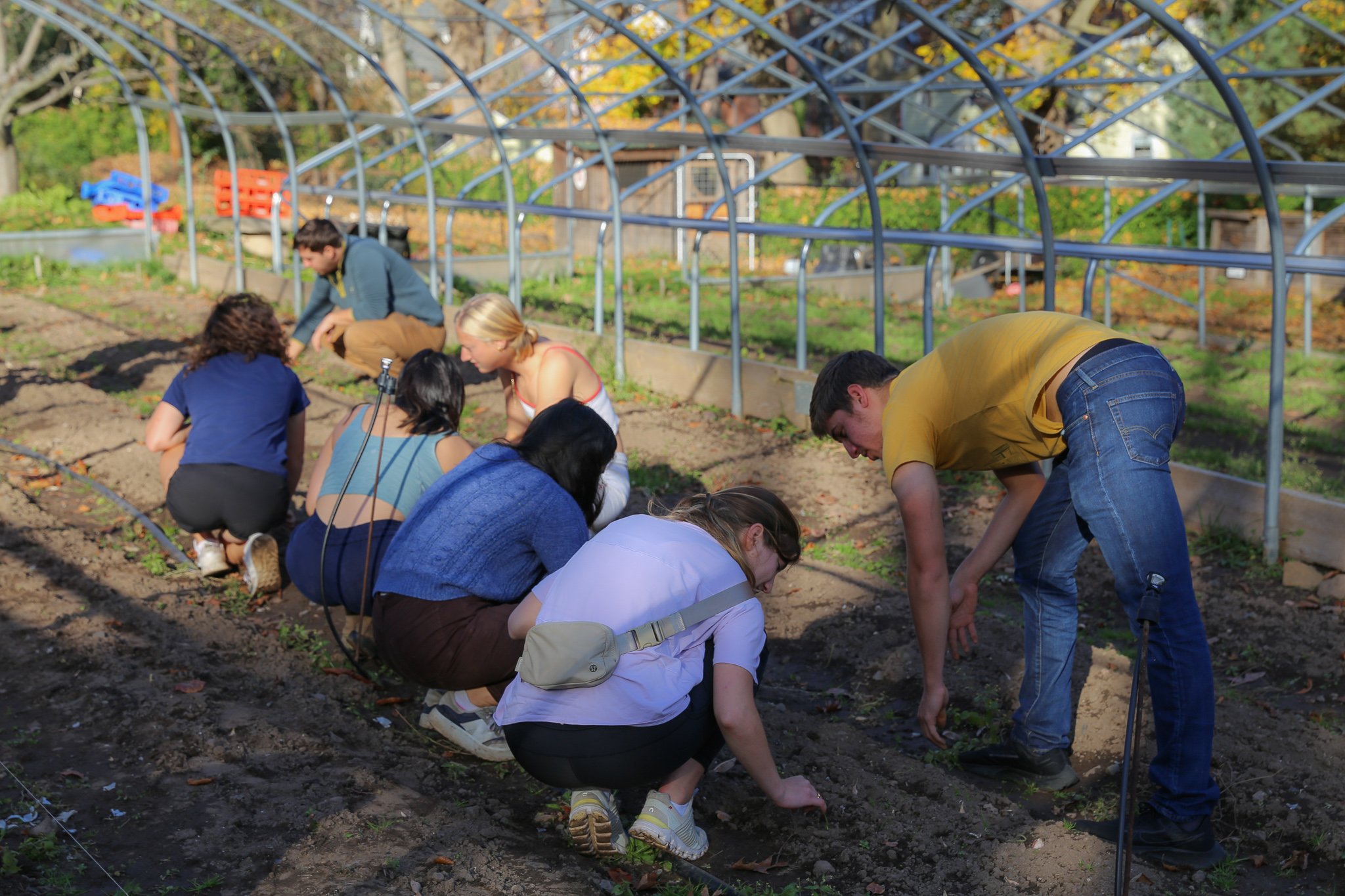
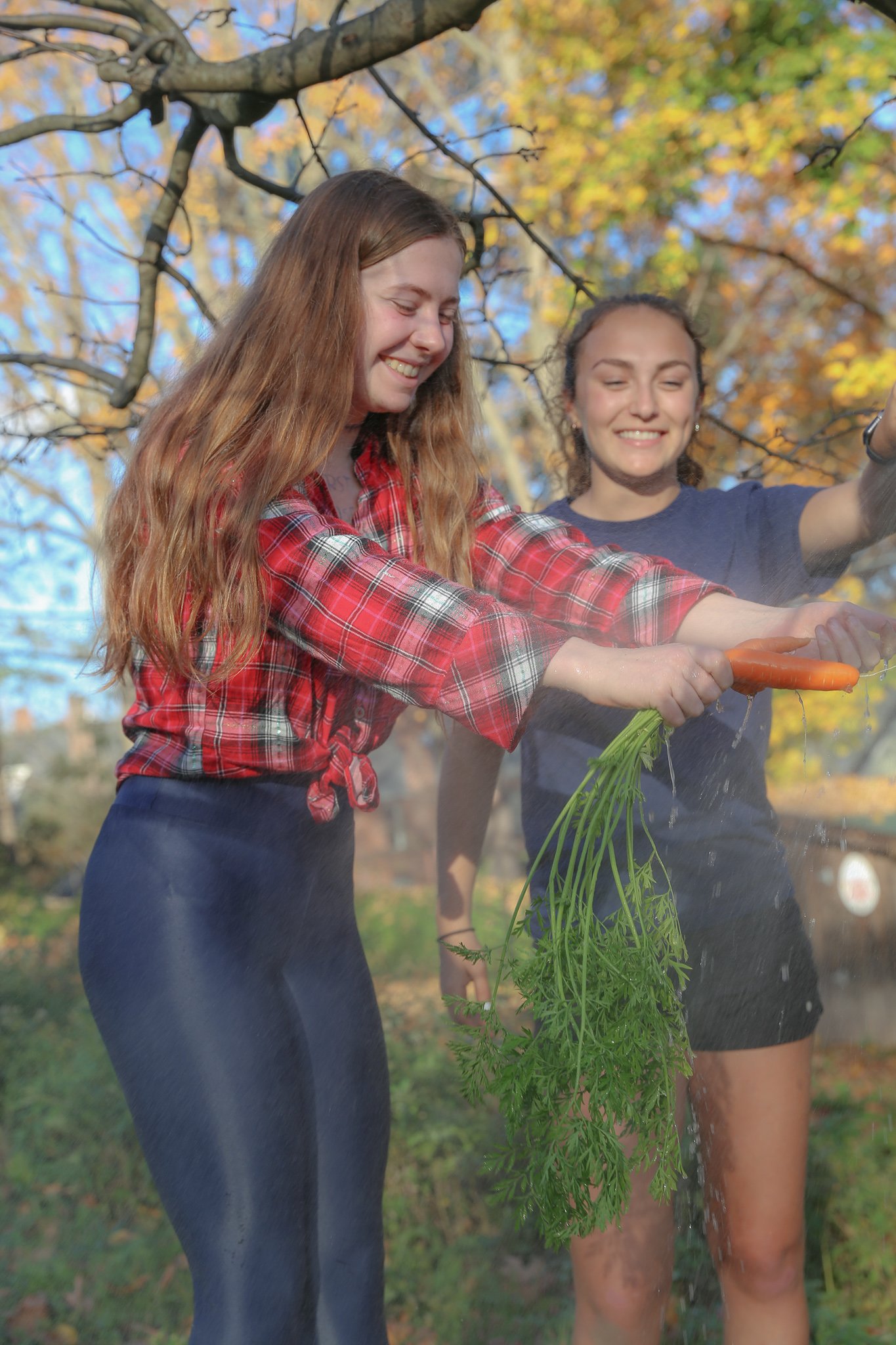
The last pizza workday of the semester was a warm and sunny one. The atmosphere on the Farm was ebullient as students rounded out old harvests and prepared for new crops to come. Students were grateful for the sunshine as they harvested and sprayed 20 pounds of carrots for the Dwight Community Fridge, misting themselves in the process. After many weeks of garland-making, workday participants harvested all the marigolds they could to make a final round of summery decor. Preparing for garlic was a multi-stage process, with some students breaking up softneck garlic bulbs while the rest used scuffle hoes to prepare the fields. They all gathered to plant the hundreds of cloves, each of which will grow into a full-fledged bulb of its own. They also delighted in threshing and winnowing our Midnight Black Turtle beans. Some students tossed the pods in pillow cases, beating them against the ground in order to remove the beans from their husks. But many took the more meditative route, separating the beans by hand, and the hoop house was full of the sound of pods cracking and beans cascading into buckets. The beans will be used in this week’s Fall Feast—a partnership with the Native American Cultural Center—while the husks will end up as dry matter for the compost. Other students helped pick hot peppers, resulting in many tests of spice tolerance—tempered by spoonfuls of ricotta donated by the Culinary Events Team.
Hot peppers weren’t the only things eaten, as participants gathered for pizza in the Lazarus Pavilion. This week’s knead 2 know was delivered by Camilla Ledezma ’23.5, a Culinary Events Manager and 2021 Global Food Fellow who spent her summer in Spain. Her presentation focused on the role of non-human animals and animality in the Spanish colonial project. She described how Spanish colonists believed in a humoral theory of health, in which the body contained a mixture of four humors, each tied to a respective temperament: blood (sanguine), phlegm (phlegmatic), black bile (melancholic), and yellow bile (choleric). Food played a role in balancing these humors—beef and pork, for example, were sanguine, while fish was phlegmatic. Upon arriving in what is now called the Americas, Spanish colonists were concerned that eating Indigenous foods would affect their humors, making them more like Indigenous people. In the colonial imagination, Indigenous people were seen as animal-like, in part because of their different foodways and agricultural practices. For example, the land was supposedly insufficiently developed, at least until the arrival of European cows wreaked havoc on the environment in an “ungulate eruption.” Ledezma also reflected on the ways in which Indigenous people resisted the imposition of colonial foodways. She noted that high rates of lactose intolerance among Native peoples can be read as the body resisting the forced introduction of beef and dairy.
After a round of questions about Ledezma’s thought-provoking presentation, students enjoyed the last Farm-fresh pizzas of the semester. Next week from 3:00 to 5:00 PM at the Native American Cultural Center, the Farm will co-host its annual Fall Feast, a celebration of Indigenous foodways. Thank you to everyone who has joined us on the fields and under the Lazarus Pavilion this semester. Photos from the event can be found here.
